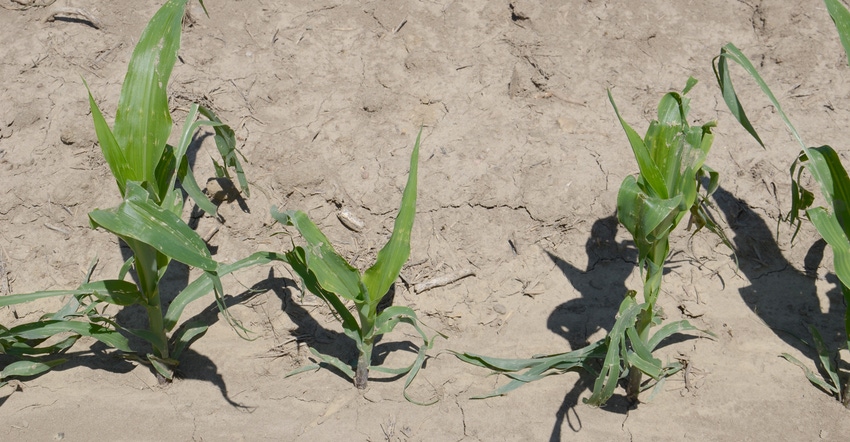January 29, 2019

To successfully raise a crop, it’s important to understand how it grows. Let’s look at the early growth of corn. It’s one of the most efficient plants for capturing sunlight, water and nutrients to create starch, protein and oil. Each seed can produce from 500 to 800 kernels, compared to 50 to 60 kernels per wheat seed.
However, it takes tender loving care before a corn plant establishes itself and takes off.
We need to plant seed where it can grow and prosper. Our planting studies indicate ideal planting depth is 2 to 3 inches, with medium down pressure and a planter speed based on soil conditions. With modern planters, you can plant at speeds higher than 5 to 6 miles per hour, but you get better plant distribution and less plant-to-plant variability at lower speeds.
Growth stages
The early stages of growth are critical for establishment of a good stand. If you understand these stages, you can scout fields and make the right replanting decisions. It takes 100 to 110 growing degree days to accumulate for corn seedlings emerge.
The root is first to break through the seed coat. The shoot breaks through the seed coat one or two days after the root. The shoot is enclosed in a pointed structure called the coleoptile, which protects the leaves as the shoot pushes upward through the soil.
The first seedling root is followed by several other roots, which serve to anchor the developing seedling. As soon as the coleoptile reaches light, it splits at the tip; two leaves come out of the whorl and unfold at the rate of about one leaf every three to four days under good growing conditions.
Germination and seedling establishment are the first critical stages for a corn plant. As roots begin to take over the job of nourishing the young plant, shortages of major elements — especially nitrogen, phosphorus and potassium — can slow growth and development. Young corn seedlings can handle setbacks, but for maximum yields, it’s best if early growing conditions are made as favorable as possible.
New leaves are produced by a single growing point at the tip of the seedling. The growing point remains underground even though there are three to four leaves above ground. Sometimes seedling leaves may be damaged by frost, but the growing point should be alright if it’s still below ground. That’s why corn plants that suffer frost or hail damage before the growing point emerges often regrow with minimal impact.
Leaf development
A corn seed contains four or five embryonic leaves. Most leaves are formed in the first four to five weeks of plant development. A corn plant may develop 18 to 24 total leaves, based on its relative maturity, planting date and environment. All these must start to grow before tassel development can begin.
The growing point of a knee-high corn plant is still near ground level. Several deficiency symptoms, especially nitrogen and phosphorus, are most common during the vegetative stage. Sometimes purplish seedling color is not caused by phosphorus deficiency but is due to genetics of the hybrid.
Nanda is director of genetics for Seed Genetics-Direct, Jeffersonville, Ohio. Email him at [email protected] or call 317-910-9876.
About the Author(s)
You May Also Like






